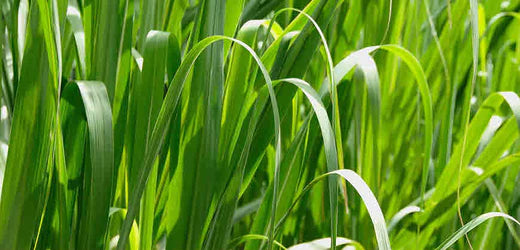Ayurveda is a conventional, all-encompassing method that has its roots in India and aims to promote physical, mental, and spiritual wellness through dietary adjustments and regular exercise. Ayurvedic practices always hold a torchlight in trying times to help cleanse the body and defend against disease, and Ayurvedic medicine aims to stop the illness effectively through various means like nutrition, medical treatment, spices in food, etc. Ayurvedic medicines offer strong protection from diseases.
General Information
Rusa grass, often referred to as Rohisha, and Cymbopogon martini are both used to treat a variety of gastrointestinal (GI) diseases, including diarrhea, as well as joint and respiratory pain, anorexia, worm infestation, and inflammation of the skin. This can be found in the upper Himalayas at an elevation of 2,000 meters. From September to November, its blooms are in bloom. This plant is regarded as a source of carvone, geraniol, linalol, and other compounds. This herb is utilized to balance the Vata and Kapha doshas, and its paste is also effective at reducing the rakta dosha and purifying the blood.
Special Note About This Plant
This plant is used in traditional medicine for a number of ailments, including rheumatoid arthritis, hair loss, joint discomfort, and spasmodic pains, and it also exhibits excellent benefits for fungi. This is a little herb that is widely distributed in the temperate regions of the Himalayas. It features two plant species that are known as Motiya and Sofia. These are not distinct from their vegetative characteristics, but they are distinct from their growth environments since motiya varieties are found next to one another whereas sofia varieties are located in fields in groups. The Sofia type contains less geraniol than the motia variety and is known by the name Ginger Grass Oil. The Motia variety is high in geraniol and is typically found with its name, Palmarosa oil.
Systemic Classification
- Botanical Name - Cymbopogon martini
- Species - Martini
- Family - Gramineae
- Genus - Cymbopogon
Synonyms
- Nal - Resembles a hollow pipe.
- Shunya Madhya - The middle part is empty.
- Dhaman - Its soft stem is used for making hollow pipes.
Other Common Names
- In Sanskrit - Rohish
- In Hindi - Rusa ghas, Mirchagandh
- In English - Rusa Grass
- In Bengal - Agiyaghas
- In Gujarati - Ronsado
- In Malayalam - Rohish gavat
Habitat
A perennial herb known as rusa grass, it has a rose-like scent and is sweet-smelling. It rises up to five to eight feet high from the ground and has bulging nodular growths on the lower end. It grows from a short, sturdy, woody rootstock.
The leaves are linear and lance-shaped, growing up to fifty centimeters long and ten to thirty millimeters wide at the base. Above, they are dark green in color and have a heart-shaped shape.
Its spatheoles are two to four centimeters long and have a tinge of red and orange color when they are mature. Its panicles are around thirty centimeters long and have a linear or oblong shape.
The lowermost pedicle is inflated, the blooms have a barrel shape, and they are one and a half to two centimeters long. The flowers also have some hair on the back.
The lower sessile spikelets have a deep V-shaped groove, while the upper glume is flat and elliptic-oblong, measuring four to four and a half mm long. This can be found in the upper Himalayas at an elevation of 2,000 meters. From September to November, its blooms are in bloom.
Classical Categorisation
- This plant is referenced by Acharya Charak in his most potent mahakashaya varg, the Stanayajanan mahakashaya.
- This plant was reported by Bhavprakash Nighantu in his book Beautiful Herbs Used for Different Types of Diseases. Rohisha plant was categorized by him as Guduchyadi Varga.
- This plant is discussed by Raj Nigamantu in the Shalmalayadi Varga.
- This herb has also been referenced in the writings of Kaidev Nighantu and Dhanwantri Nighantu.
Ayurvedic Properties
|
Particular |
Hindi / Sanskrit |
English |
|
Rasa (Taste) |
Katu, Tikta |
Pungent, Bitter |
|
Guna (Quality) |
Laghu, Ruksha |
Light, Dry |
|
Virya (Potency) |
Ushna |
hot |
|
Vipaka (Post-Digestive effect) |
Katu |
Pungent |
Effects on Doshas
Balances the Vata and Kapha doshas, and the Rakta dosha is treated with the herb's paste.
Traditional indications include Raktapitta (caused by natural bleeding such as epistaxis and heavy menstrual flow), Pandu (pruritus), Krumi roga (worm infestation), Kasa-shwas(cough cold- many chronic respiratory diseases), Ajeerna (indigestion), Aruchi (anorexia), Kantha (vyahi) (hoarseness of voice), Balagraha(psychiatric issues in children).
Practical Uses
- This herb aids in the maintenance of all three doshas, but Vataj-pittaj vikaras include its tested effects.
- It has a remarkable impact on skin conditions like visarpa roga and others.
- When used internally, it is useful for blood purification and illnesses related to the blood.
- Its roots are used to make a decoction that helps females produce more milk.
- Additionally, it aids in increasing male sperm production.
- When patients are concerned about their dysuria, this is also used as a diuretic to treat bladder irritation.
- Also, it strengthens the heart muscles.
- This herb's cold infusion is used to treat illnesses connected to nausea, anorexia, and fever.
- Its oil extraction, which is combined with hot water and used for steam inhalation in asthmatic and chilly conditions, produces remarkable benefits.
- Additionally, it works well for skin discoloration and scabies.
-
The Rohisha herb's oil is used to relieve rheumatoid arthritis discomfort and to stimulate hair growth in alopecia.
Dosage
- Its decoction has a 50- to 100-ml serving size.
- One to three drops of the oil preparation should be given to a person who needs it.
Part Used
- Leaves, flowers, and stem

